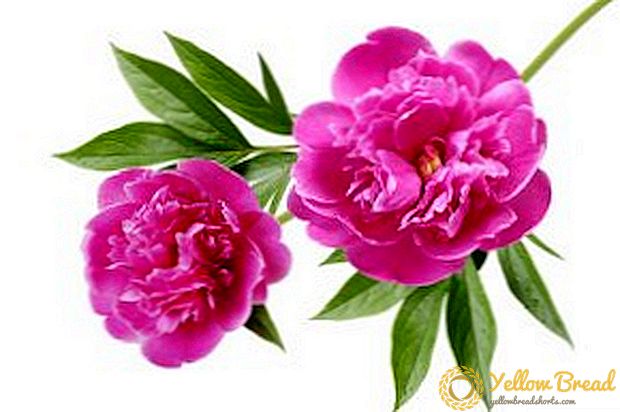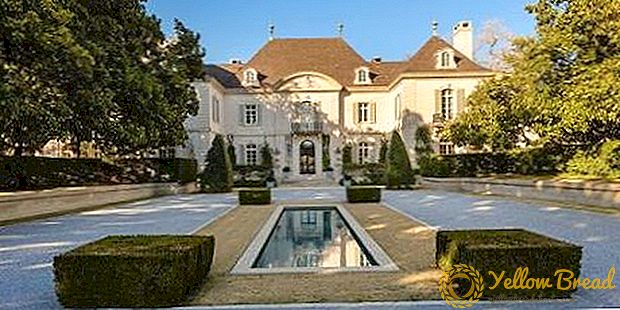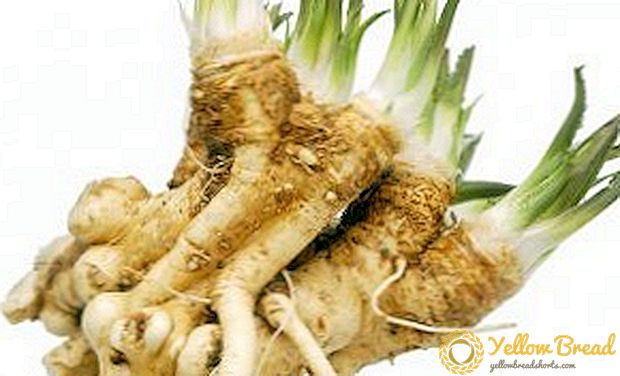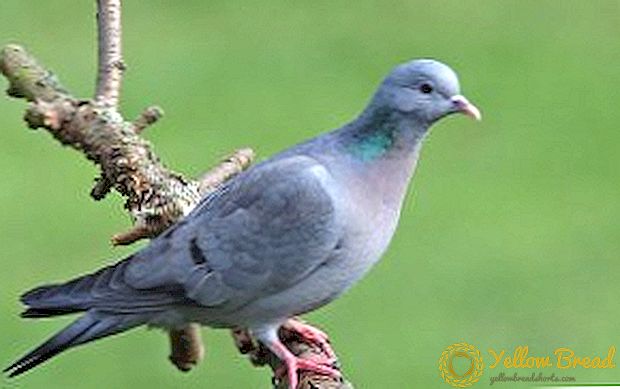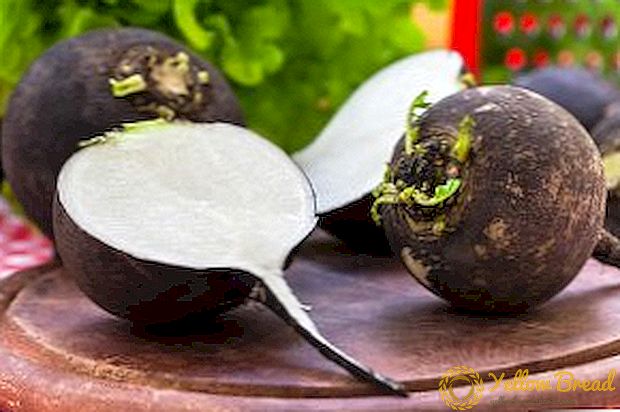 Honeysuckle (Lonicera) is a common shrub among gardeners, and, depending on the species, can be ornamental or fruitful. In the period from June to the end of July, honeysuckle exudes a heady smell that attracts beneficial insects. The height of the fragrant vine is from 3 to 6 m. Fungal and viral diseases are usually aimed at the bark and leaves of the plant. This article will help identify the main diseases of honeysuckle and talk about how to treat them.
Honeysuckle (Lonicera) is a common shrub among gardeners, and, depending on the species, can be ornamental or fruitful. In the period from June to the end of July, honeysuckle exudes a heady smell that attracts beneficial insects. The height of the fragrant vine is from 3 to 6 m. Fungal and viral diseases are usually aimed at the bark and leaves of the plant. This article will help identify the main diseases of honeysuckle and talk about how to treat them.
- Fungal diseases of honeysuckle
- Ramulariosis
- Mealy dew
- Freezers
- Cercosporosis
- Tuberculosis
- European cancer
- Blackening branches
- Leaf spot (reddish-olive spots)
- Viral diseases of honeysuckle
- Rezu Mosaic Virus
- Mottled leaves
Fungal diseases of honeysuckle
Planting honeysuckle in poor soil or inadequate lighting conditions can lead to a variety of problems. The most common fungal diseases of honeysuckle are powdery mildew, leaf spot, blackening of the branches, ramulariasis, chalcosporosis, freezers and others. While some types of honeysuckle need a sunny place, others may burn their leaves in full sun.  The reason why honeysuckle does not bear fruit is often the absence of cross-pollination. Honeysuckle requires a well-drained, fertile soil with neutral acidity. In acidic soil, honeysuckle may suffer from nutrient deficiencies, resulting in weak growth in the form of pale leaves. A shrub planted in heavy clay soil may develop root rot, which will eventually kill the plant.
The reason why honeysuckle does not bear fruit is often the absence of cross-pollination. Honeysuckle requires a well-drained, fertile soil with neutral acidity. In acidic soil, honeysuckle may suffer from nutrient deficiencies, resulting in weak growth in the form of pale leaves. A shrub planted in heavy clay soil may develop root rot, which will eventually kill the plant.
Ramulariosis
Ramulariosis (or white spot) - This is a dangerous fungal disease, often affecting the shrub honeysuckle. In the early stages, small grayish-brown spots form on the young leaves of the shrub. Formations are characterized by irregular shape and the presence of a white core.  Due to the growth of young leaves, the spots increase. In wet weather, a harmful fungus creates a white powdery coating on the leaf surface. White spotting also affects the pericarp, stalk, and stalk. This threatens honeysuckle metabolic disorders and the death of the affected leaves. Honeysuckle loses many nutrients, weakens the root system and the plant as a whole.In winter, the fungus Ramularia remains in the soil or in plant residues of honeysuckle. Humidity and low temperature contribute to the spread of the disease.
Due to the growth of young leaves, the spots increase. In wet weather, a harmful fungus creates a white powdery coating on the leaf surface. White spotting also affects the pericarp, stalk, and stalk. This threatens honeysuckle metabolic disorders and the death of the affected leaves. Honeysuckle loses many nutrients, weakens the root system and the plant as a whole.In winter, the fungus Ramularia remains in the soil or in plant residues of honeysuckle. Humidity and low temperature contribute to the spread of the disease.
An effective method of dealing with ramulariasis is spraying with a liquid, the active component of which is copper sulfate. The fungicide "Fundazol" (Benomyl) is also effective against white spot.
Mealy dew
Mealy dew - a fungal disease that attacks the honeysuckle, when the plant does not get enough water. Mealy dew appears as characteristic gray or white dust spots on the leaves. The coating is similar to powder and resembles felt. Over time, areas with mold will expand until they cover the entire leaf. Powdered mold can spread to buds and to new shoots of honeysuckle.  Sometimes there is deformation of plant embryos. The fungal disease thrives at temperatures from +15 to +25 ° C.However, honeysuckle is most seriously affected by this disease when in shade or partial shade.
Sometimes there is deformation of plant embryos. The fungal disease thrives at temperatures from +15 to +25 ° C.However, honeysuckle is most seriously affected by this disease when in shade or partial shade.
Freezers
Honeysuckle shows poor frost resistance. Observations have shown that the plant tolerates severe winters with low temperatures. With the onset of spring shoots and bushes burst. Saprotrophic bacteria settle on the areas damaged by frost. The fungus forms a dark film, which causes the honeysuckle shoots to dry out.  The method of dealing with frostbite is pruning affected shoots. To remove the fungal infection is recommended to spray honeysuckle Bordeaux liquid. Processing takes place immediately after flowering.
The method of dealing with frostbite is pruning affected shoots. To remove the fungal infection is recommended to spray honeysuckle Bordeaux liquid. Processing takes place immediately after flowering.
Cercosporosis
Cercosporosis - Another dangerous fungal disease of honeysuckle. Cercosporosis is characterized by the formation of small round spots on the leaves. Initially, they have a dirty green tint, then they acquire a brown or light gray color with a dark red border. The leaves of honeysuckle gradually dry. In wet weather, the so-called "black rash" spreads under them.  To combat the disease requires the removal and burning of infected leaves. Then spraying is carried out with Bordeaux mixture, copper-soap solution, cuprozan or fungicides (the preparation "Fundazol"). Experts recommend spraying honeysuckle in early spring.
To combat the disease requires the removal and burning of infected leaves. Then spraying is carried out with Bordeaux mixture, copper-soap solution, cuprozan or fungicides (the preparation "Fundazol"). Experts recommend spraying honeysuckle in early spring.
Tuberculosis
Tuberculosis (or drying of shoots) - A fungal disease of honeysuckle, causing many problems for gardeners. Reddish tubercles appear on the affected shoots of the shrub. Gradually, spores infect neighboring branches. In addition, the mycelium is formed in the bark of the plant. Already in June the leaf blades dry out and the stems wither. In August, reddish tubercles again develop on the affected stems. Thus, the dispute propagation phase is repeated. The fungus pathogen overwinters in the affected branches in the form of a mycelium and fruiting bodies.  The main ways to combat honeysuckle tuberculosis are to remove and burn the affected branches of the plant. As for the question of how to spray honeysuckle in early spring (after flowering), then Bordeaux liquid or copper oxychloride is suitable for this purpose.
The main ways to combat honeysuckle tuberculosis are to remove and burn the affected branches of the plant. As for the question of how to spray honeysuckle in early spring (after flowering), then Bordeaux liquid or copper oxychloride is suitable for this purpose.
European cancer
Cancer ordinary (or European) - A common honeysuckle disease that develops in warm climates. The disease is caused by fungi that infect the plant through open wounds on the stems. Frequent rains or heavy watering facilitate the spread of this fungal disease.  Leaves on painful stems wither and turn yellow or brown. At the tops of the branches appear characteristic gray (colorless) spots. In the center of these formations you can usually notice brown or gray spots. The ulcers can be wet or have tiny black sprouts that form mushroom spores.
Leaves on painful stems wither and turn yellow or brown. At the tops of the branches appear characteristic gray (colorless) spots. In the center of these formations you can usually notice brown or gray spots. The ulcers can be wet or have tiny black sprouts that form mushroom spores.
Regular watering and spraying the branches of the honeysuckle will help reduce the likelihood of infection with this disease. And to prevent further spread of the disease, get rid of the affected stalks.
Blackening branches
Blackening affects drying stems. The fungus pathogen settles on weakened plants, forming a characteristic black soot on the surface of leaves or cora honeysuckle. Plaque consists of mycelium with spores.  A method of dealing with the blackening of the branches of honeysuckle is the timely removal of withered shoots. Annual preventive spraying of the shrub will also help against this disease. Spraying is done in early spring or immediately after flowering. For those who are concerned about how to process honeysuckle in the spring, we recommend using the Bordeaux mixture.
A method of dealing with the blackening of the branches of honeysuckle is the timely removal of withered shoots. Annual preventive spraying of the shrub will also help against this disease. Spraying is done in early spring or immediately after flowering. For those who are concerned about how to process honeysuckle in the spring, we recommend using the Bordeaux mixture.
Leaf spot (reddish-olive spots)
When the proper conditions for growing honeysuckle are violated, it is sometimes attacked by a fungal disease like leaf spotting. Spotting can be identified by characteristic reddish-olive spots on both sides of the leaf. Leaf spot affects new young foliage in the middle of summer. Gradually, the spots darken and become brown with darker borders. In the affected tissue, dotted fruit bodies are formed in which the fungus overwinters. The leaves turn yellow, dry out and fall prematurely.  A preventative solution is regular pruning and autumn harvesting of fallen leaves. In severe cases, you can use the fungicide "Mancozeb", Bordeaux liquid or copper oxychloride.
A preventative solution is regular pruning and autumn harvesting of fallen leaves. In severe cases, you can use the fungicide "Mancozeb", Bordeaux liquid or copper oxychloride.
Viral diseases of honeysuckle
All types of honeysuckle are susceptible to the same viral diseases that are easily diagnosable and treatable. Some varieties of honeysuckle are naturally resistant to viruses. Therefore, whenever possible, disease-resistant species should be planted. The most enduring varieties of honeysuckle include: common honeysuckle, Tatar honeysuckle, Maak's honeysuckle, covering honeysuckle, Korolkov honeysuckle, Alpine honeysuckle. 
Rezu Mosaic Virus
Honeysuckle is infected with a reza mosaic virus through poor-quality planting material or spread by nematodes (roundworms). On young rooted cuttings of honeysuckle, this virus is capable of causing bushiness. This is manifested by a sharp shortening of internodes, the awakening of the axillary buds, and the growth of many lateral shoots.Leaves remain underdeveloped, honeysuckle bushes shrink and gradually dry out.
The best control of the reza mosaic virus is to remove and destroy the affected parts of the honeysuckle.
Mottled leaves
Leaf mottling is a viral disease transmitted by various types of nematodes. A sign of infection with a virus is the formation of streaky or arcuate spots of brown color, as well as general yellowing of the leaves.
A measure to combat the honeysuckle leaf speck virus is phytosanitary cleaning and burning of individual infected stems and the removal of diseased bushes. Prophylactic treatment of honeysuckle in the fall consists of standard pruning of shrunken branches and fertilization.  Unlike diseases, pests are rarely a problem for honeysuckle. These plants grow quickly enough; so the damage caused by pests is replaced by new growth. For example, aphids are not attracted to the woody stems of honeysuckle, but can invade the tender young shoots of the plant in late spring. Sometimes caterpillars can be seen on the leaves of honeysuckle. A mealybug can infect honeysuckle, but it usually doesn’t do much harm.
Unlike diseases, pests are rarely a problem for honeysuckle. These plants grow quickly enough; so the damage caused by pests is replaced by new growth. For example, aphids are not attracted to the woody stems of honeysuckle, but can invade the tender young shoots of the plant in late spring. Sometimes caterpillars can be seen on the leaves of honeysuckle. A mealybug can infect honeysuckle, but it usually doesn’t do much harm.
However, pests can migrate to other plants in your garden. The standard treatment of honeysuckle in spring with mineral or organic fertilizers will help get rid of both diseases and pests.
Try to follow these fairly simple rules for the treatment of fragrant honeysuckle! Honeysuckle bushes "thank" you and become a real decoration of the site, as well as delight their useful and tasty fruits. Understanding the needs of a particular plant species and timely prevention will help protect the honeysuckle (or honeysuckle) from most diseases.


